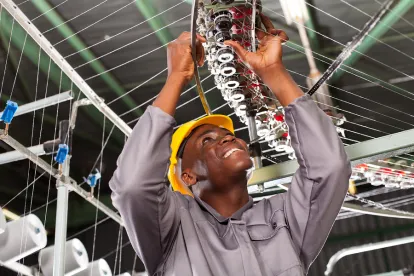Many companies that have been working remotely during COVID-19 expect to continue to do so, at least to some extent after the pandemic. At first, it might seem that manufacturing would not be an industry where remote models would be prevalent. But, due to a changing occupational mix, only two-fifths of employees are involved in actually “making things.” Accordingly, the manufacturing industry needs to pay attention to the relevant remote and flexible hybrid work models, particularly as to foreign national employees.
Even employees who are involved in actual production have been able to successfully work remotely with the use of collaborative software — at least part of the time. As fully remote and flexible hybrid work models are being developed, special attention needs to be paid to foreign national employees who are working in nonimmigrant visa status.
Remote, Flexible Work Hours
Employers are required to notify the U.S. Citizenship and Immigration Services (USCIS) about most material changes in the terms and conditions of employment for employees on nonimmigrant work visas before those modifications take place. Failure to do so can affect an employee’s work authorization and immigration status. Material changes often are discovered when the company reaches out to their immigration counsel to begin the process for the visa employee’s extension of stay. The best practice is to reach out to immigration counsel in advance of making changes to determine whether a new filing is needed.
What constitutes a material change is fact-specific, but common scenarios include:
-
Changes in work location, i.e., working from home or from another remote location;
-
Changes in hours or salary other than a normal yearly raise; and
-
Material changes in job duties, such as a change from a software engineer to an IT manager.
Material job changes also may affect green card applications that are in process. Pending or certified Program Electronic Review Management (PERM) labor certifications might have to be restarted or totally redone. In addition, a change in work location can affect salary requirements both for green card cases and H-1B nonimmigrant visas. It is important to consider not only the immigration aspects of these changes, but also to prepare for the additional costs involved.
Another set of rules applies to remote work outside the United States. If a company has workers who are participating in cross-border remote work, even from their “home countries,” there can be unexpected difficulties regarding work authorization, taxes, payroll requirements, local employment and income tax, benefit coverage, and even cybersecurity that must be considered before a company makes a commitment that could have broad implications (such as tax consequences and local liabilities) for the employee and the company.
Form I-9 Employment Authorization
Since March 2020, companies that have been operating remotely have been able to inspect I-9 documents virtually, over video link, or by fax or email. Immigration and Customs Enforcement (ICE) announced this flexible approach would be continued until August 31, 2021, at least.
At this point, in-person inspection applies only to employees who report to work at a company location on a “regular, consistent or predictable basis.” When the flexibility ends, there likely will be a “rush” to conduct in-person verification and reverification within the time frame required by the Department of Homeland Security, which could be as little as the standard three business days or as much as a few months. While this applies to all new hires who were verified remotely, the reverification provisions particularly affect foreign national employees in nonimmigrant status.
To prepare, employers should:
-
Maintain a list of all employees who were verified or reverified virtually, when they will be returning to work, and the deadline for their in-person verification;
-
Decide who will be conducting in-person verifications, how they will reach out to affected employees, and whether they need more training;
-
Consider starting in-person document inspection as employees come to the worksite (whether on a regular basis or not);
-
Beware of special rules regarding I-9s for individuals who are beneficiaries of Temporary Protected Status or Deferred Enforced Deportation; and
-
If the company will continue to have remote workers, consider whether you will require them to initially appear at a work location for I-9 purposes or whether you will select remote employer representatives (agents) to conduct verifications on the company’s behalf. Include that information in any remote work agreement or offer letter. If using a remote agent, the company will remain responsible for any errors made by the agent during the process.
If a company has nonimmigrant employees, it must consider the special needs, costs, and possible liabilities involved in adjusting work policies for the post-COVID-19 world.




 />i
/>i

